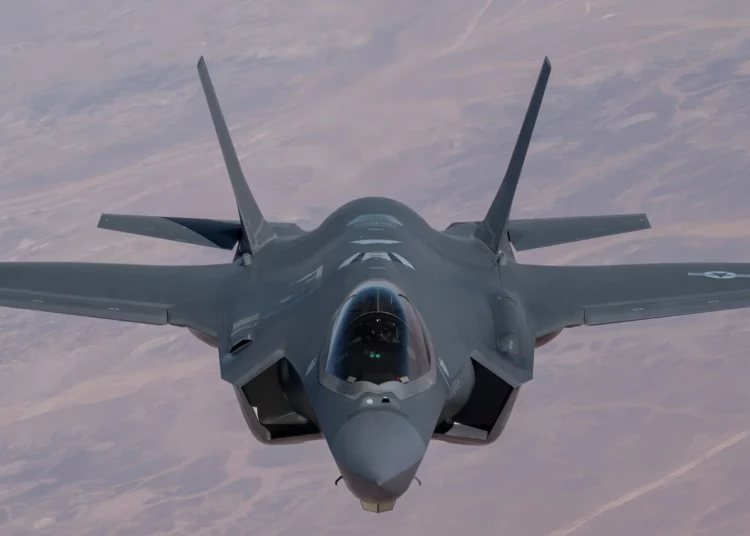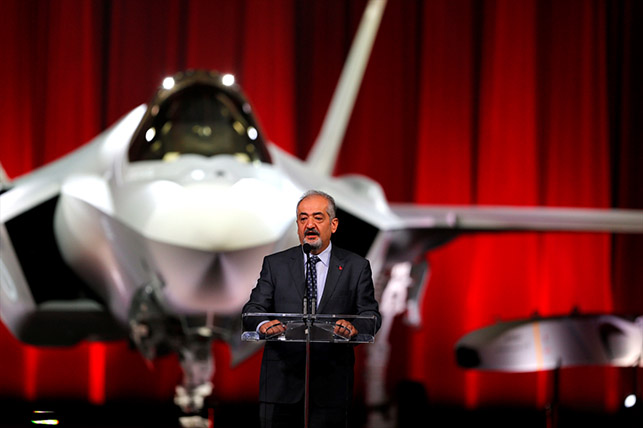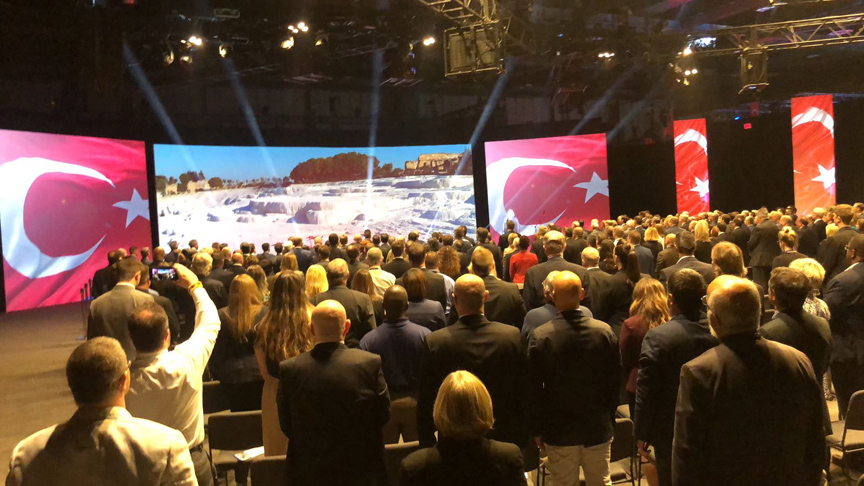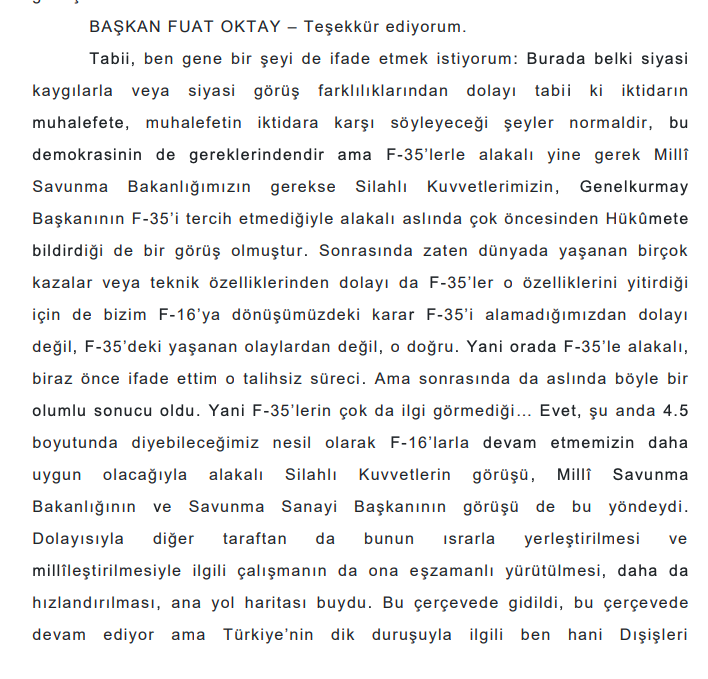The F35 is a white elephant that has not gotten off the runway yet, you want too know the costs of this ,OK that's easy you just have read the press...The American and International press that is. Something the PBO did while the Harpocrites continue to deny, deny, deny....So what did Lockheed Martin promise the Harpocrites?
After all Lockheed Martin now also does the information collection for Stats Canada as it does for Stats UK.
Ironically the only persons to protest the mandatory census law in Canada and get charged, which the Harpocrites used to justify the canceling of the Long Form census, were Anti-War/ Anti-Lockheed Martin protesters.
Gates Shakes Up Leadership for F-35 - NYTimes.com
McCain Says F-35 Cost Overruns Have Been `Obscene': Video - Bloomberg
The cost overrun on the main engine for the Lockheed Martin Corp (LMT.N) F-35 fighter jet has grown by $600 million over the past year, despite tough cost-cutting measures by engine maker Pratt & Whitney, a unit of United Technologies Corp (UTX.N), a Navy document shows.
The total cost to complete the Pratt F135 engine is now estimated to be $7.28 billion -- $2.5 billion more than the $4.8 billion initially projected for the engine, according to the document, which was first reported by Aviation Week magazine on its website on Wednesday.
That is an increase of $600 million from the $1.9 billion cost overrun that was reported last year by the House Armed Services Committee.
Pratt spokeswoman Erin Dick said she was not familiar with the new number, and emphasized that the company's aggressive cost-cutting measures were taking effect.Pentagon officials disclosed last week that the F-35 joint strike fighter program so far has exceeded its original cost estimates by more than 50 percent.
These revelations come as no surprise considering the history of this program. The Government Accountability Office concluded that F-35 estimated acquisition costs have increased $46 billion and development extended two-and-a-half years compared to the program baseline approved in 2007.
The price per aircraft projected at $69 million in 2001 is now up to $112 million, according to GAO. The Pentagon plans to acquire 2,443 jets for the Air Force, Navy, and Marine Corps. Foreign nations also are expected to buy the aircraft.A congressional auditor said Thursday that the Joint Strike Fighter, the Pentagon's most expensive weapons program, "continues to struggle with increased costs and slowed progress," leading to "substantial risk" that the defense contractor will not be able to build the jet on time or deliver as many aircraft as expected.
Michael Sullivan, the U.S. Government Accountability Office's top analyst on Lockheed Martin's jet fighter, also known as the F-35 Lightning II, told the Senate Armed Services Committee in a hearing that the cost of the program has increased substantially and that development is 2 1/2 years behind schedule.
The United States plans to buy about 2,400 of the fighter jets for the Air Force, the Marine Corps and the Navy. The projected cost for the program appears to have increased to $323 billion from $231 billion in 2001, when Bethesda-based Lockheed won the deal, according to Sullivan. Eight other countries -- Britain, Italy, the Netherlands, Turkey, Canada, Australia, Denmark and Norway -- also plan to buy the jets.
The cost to build the plane is now expected to be $112 million per aircraft, according to a GAO auditor.
US Joint Strike Fighter (F-35) Hits Afterburners on Cost Overrun
POSTED BY: Robert Charette / Fri, March 12, 2010
The US Department of Defense officially announced that the Joint Strike Fighter aka F-35 Lightning II will breach a Nunn-McCurdy Amendment critical threshold on 1 April - an appropriate day, I think.
The Nunn-McCurdy Amendment says that a major defense program is considered to have incurred a "critical breach" if it exceeds the current baseline cost estimate by more than 25% or the original baseline cost estimate by 50%.
Defense officials told the US Senate Armed Services Committee in a hearing yesterday that the estimated cost per F-35 aircraft had risen from $50.2 million to somewhere between $80 to $95 million in 2002 constant dollars. The program has also slipped its schedule by at least two and a half years as well for the USAF and Navy versions of the aircraft (it was slipped by 2 years in 2004 as well).
As a result of the breach, the DoD must certify to the US Congress that the program is essential for national security, which it will, of course; and Congress - which is very unhappy with the program's management (the government's program manager was recently fired) - will continue to fund the F-35 because there is little other choice.
The other eight nations participating in the program - Australia, Canada, Denmark, Italy, the Netherlands, Norway, Turkey and the U.K. - aren't going to be happy about the cost increases either. I suspect some sweetheart deal will be made to make them less unhappy.
The F-35 program, which has a total life cycle cost of over $1 trillion dollars, was promised to be a "model acquisition program" which would avoid the cost overruns and schedule slips of past aircraft programs like the F-22 Raptor and provide an "affordable next generation strike aircraft."
The JSF website says that, "The focus of the program is affordability -- reducing the development cost, production cost, and cost of ownership of the JSF family of aircraft."
They may want to now amend that sentence.
The Australians are now seriously reconsidering their purchase of the F35
Because the RAAF’s Hornets are aging, Canberra approved the purchase of
Super Hornets as an interim aircraft between the classic Hornet and the
F-35. Aerospace industry and military officials contend that without the
Super Hornet to make the task of integration incremental, the shift
from Hornet to F-35 would likely have become a nightmare of increased cost, complexity and schedule overruns.
And yes Joe and Janey Canuk there is an alternative to this overpriced piece of war machinery...And Japan is looking at buying it....
The F-35, otherwise known as the ball and chain seemingly the entire Western world finds itself chained to, is probably not looking so good to Tokyo right now.Besides budget Hawks like McCain even the Conservative think tank the Hudson Institute is critical of the F35 boondoggle.
Now, delays suggest the F-35, another stealthy, state-of-the-art option, will not be available until 2020, which could leave a longer-than-acceptable gap for Japan.Enter the Eurofighter, which is not as advanced as the F-22 or F-35 _ known as fifth-generation fighters_ but is already in service.
The supersonic aircraft, which made its first flight in 1994, is used by six countries: Germany, Italy, Spain, Britain, Austria and Saudi Arabia. Its makers are looking to sell the fighter to Greece, Denmark, Romania, Qatar and India. It is believed to cost about $100 million per aircraft.
A big part of the Eurofighter sales pitch is that it will not tightly restrict the transfer of technology, which means some of it could eventually be built in Japan _ a significant plus for Japanese planners concerned with domestic industry. The U.S. options may not be as generous.
"The Eurofighter group has offered Tokyo lots of sweeteners, including industrial participation," he said. "If the U.S. side can't come up with something equally attractive, then I think it will be difficult for Tokyo to choose a less beneficial deal."Christopher Hughes, a Japan specialist and political scientist at the University of Warwick, said he believes Tokyo may go for the Eurofighter as a gap-filler, then buy the F-35 once it is ready.
"My feeling is that the Eurofighter might have a chance, but not as the main F-X," he said. "It ticks a lot of boxes and is ready to go, and whilst not cheap, probably nowhere near as costly as the F-35."
The problem with the military projects in the US is that it is their form of state capitalism, which Eisenhower called the 'Military Industrial Complex.'
Do you know "Cheop's Law"? Named for the Pharaoh who built the great pyramid, and postulated by the author Robert Heinlein, it runs:"Nothing ever gets built on schedule or within budget." Anyone who questions the wisdom of this maxim should examine the Defense budgets of the world's democracies, apart from the average home remodeling project.
The US should be getting better results for the money it spends. The quality of an F-22 air superiority fighter , for example, is not in question, but if the President and Congress decide that we can only afford 187 of them, compared to a certified need for 380, then something is terribly wrong. The same problem of excessive costs leading to a severely curtailed procurement, afflicted the B-2 bomber: only 21 were bought when the air force needed about 120. Today, the F-35 Joint Strike Fighter is in danger of being canceled or curtailed due to an estimated overall 65% cost increase since 2002.
"Big military contractors, like Lockheed Martin, Northrop Grumman or Boeing, have a relationship with the government that is unusual and tight. In some ways, they operate almost as wholly-owned subsidiaries of the Pentagon, which can provide the bulk of their revenues."













